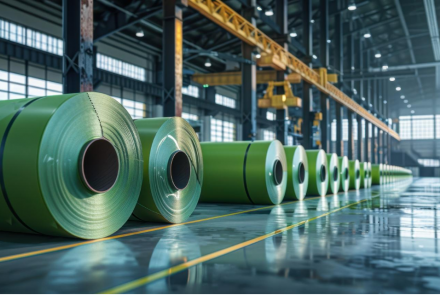
ANU research helping Australia to reach energy transition goals
The Australian National University (ANU) has launched new research programs on energy transition. One is the Energy Transition Analysis Program, an initiative aimed at supporting the Australian Government in achieving its ambitious goal of 82% renewable power commitment by 2030.
Led by Professor Frank Jotzo, an economist at the ANU College of Asia and the Pacific (CAP) and director of the Centre for Climate and Energy Policy at Crawford School, the initiative seeks to bridge the communication gap between government policymakers and university researchers.
“There is a wealth of expertise within Australian universities that the government can and should leverage” Professor Jotzo remarked, emphasising the importance of collaboration between academia and government in shaping effective policies.
Launched this year, the Energy Transition Analysis Program will provide a direct pathway for ANU research and analysis to reach policymakers at the Department of Climate Change, Energy and the Environment and Water (DCCEEW) and the Office of the Capacity Investment Scheme (OCIS) to support the government’s technological and industry transition to renewable energy.
Professor Jotzo describes this collaboration as a “novel” and essential partnership between the Commonwealth and the ANU.
The ANU College of Asia and the Pacific has long been committed to working closely with leaders in government, business and industry to translate research into practical solutions. The Energy Transition Analysis Program is an extension of this commitment, further solidifying the College’s role in shaping Australia’s energy future.
Drawing from his extensive expertise, Professor Jotzo aims to harness the diverse academic resources available within the College.
“The ANU College of Asia and the Pacific offers a wide array of academic expertise that can significantly enhance government policy,” he said.
One of the program’s key features is its interdisciplinary approach, bringing together experts from various fields across ANU and other Australian universities. Managed by Dr Ben Elliston, a fellow from the Crawford School of Public Policy, the program fosters collaboration among economists, lawyers, engineers, and scientists.
“It is really inspiring to work across disciplinary boundaries,” Professor Jotzo noted, adding that many of his colleagues find this cross-disciplinary work highly rewarding.
As Australia continues its transition from coal-fired to renewable energy, Professor Jotzo stresses the need for ongoing support to help the government achieve its renewable energy goals.
Green steel and industrial decarbonisation
An emerging focus of other work within CAP and other Colleges at ANU the program is industrial decarbonisation—a challenge he describes as one of the “most difficult aspects of climate change action.” Industrial carbon emissions, particularly in the building and construction sectors, account for one-fifth of all emissions in Australia. Steel, aluminum, and cement production, which currently rely heavily on coal, are particularly emission intensive.
“We’ve been making steel using coal for hundreds of years, producing substantial amounts of carbon dioxide emissions in the process,” Professor Jotzo explained.
Through initiatives including the Heavy Industry Low-Emissions Transition Cooperative Research Centre, ANU researchers will explore alternative energy sources for ‘green’ industrial product manufacturing, ultimately based on using renewable energy that Australia has a natural advantage in.
“Some of these technologies are still in the lab phase, which is tremendously exciting for scientists and engineering researchers,” he added. “The next steps in some ways are even more complex: how to leverage the extremely large investments that will be needed for a green iron and steel industry? And how to make sure that it will emerge in geographies where they make most sense economically and environmentally, including in Australia?”
Australia’s future opportunity in green iron supply to East Asia is the topic of a new program managed by Dr Jorrit Gosens, fellow at Crawford School.
Australia’s renewable energy transition
Australia has committed to transition to renewable energy and reach net zero by 2050 and achieve a 43% emissions reduction by 2030, and a stronger target is under consideration for 2035
Professor Jotzo points out that Australia’s energy transition has significant implications for the region, where the country is lagging, particularly compared to China.
“Energy transition and achieving net zero emissions is becoming a crucial topic for all countries in the Asia Pacific.
“China is now the global leader in manufacturing solar, wind turbines, electric cars and other industries that are central to the global energy transition,” he said.
The world is already seeing devastating impacts due to climate change. At the ANU College of Asia and the Pacific (CAP), a primary focus is advancing Australia’s engagement and understanding of the Asia-Pacific region. The various research initiatives at the Centre for Climate and Energy Policy will be well-placed to collaborate with partners in the Asia-Pacific region.
“In order to achieve the goals of the Paris agreement, every country in the world needs to do a lot more,” Professor Jotzo emphasized.
He trusts that the new programs will reinforce CAP’s reputation for policy relevance, strong collaboration and industry engagement.
Professor Jotzo was interviewed by Cooper Williams from the ANU College of Asia and the Pacific.
Updated: 21 November 2024/Responsible Officer: Crawford Engagement/Page Contact: CAP Web Team











